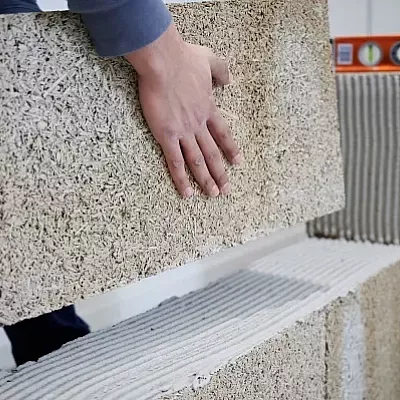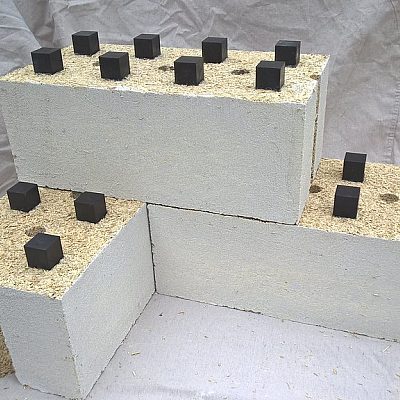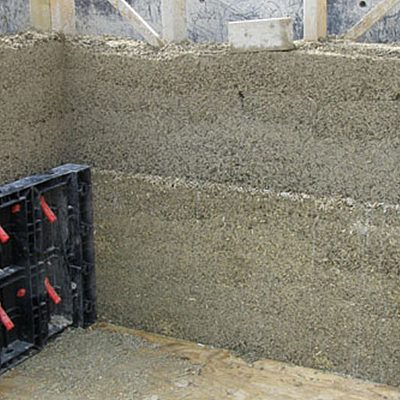Trace Material Podcast: Season 1
Pot's Benevolent Cousin
In this episode, we’re looking at the legal battles surrounding cannabis in 20th century America. In 1938, Popular Mechanics Magazine deemed hemp the “New Billion Dollar Crop.” The article claimed that hemp could be used to produce 25,000 different products, from dynamite to cellophane. But we know that hemp didn’t soar in popularity – far from it.
So, who’s responsible for the downfall of hemp? How could a plant that was proven to be so useful just up and vanish? We hear from cannabis historian Emily Dufton who helps us answer those questions and many more.
Want to dig deeper into the history of cannabis in America? Check out Emily Dufton’s book, “Grass Roots: The Rise and Fall and Rise of Marijuana in America
Films Referenced in the Episode
Contributors
Emily DuftonPot's Benevolent Cousin
4 products
About Our Collections
The goal of our collections is to help promote transparency in the material ingredients of building products by fostering knowledge and awareness of products and materials for which life-cycle information is available, and that have environmentally, economically, and socially preferable life-cycle impacts.
Keep an eye out for the following symbols:
A Healthier Affordable Building Product
Products with the designation of "Healthier & Affordable" were specified and installed in at least one of our Case Studies of healthier affordable housing.
Available at the Donghia healthier Materials Library
The Donghia healthier Materials Library library is open to Parsons student and faculty. Learn more about access and opening hours here.
Low Embodied Carbon
“Embodied Carbon” is the total amount of carbon emitted during the process of making a material. *HML refers to a manufacturer's EPD to determine whether a product's A1-A3 carbon emissions falls within HML's threshold for Low Embodied Carbon.
New Product
This product has been added to the collection within the past six months.
Product in Development
Products with this designation identify they are currently scaling or only available in markets outside of the building industry. they could be experimental or in use in capsule collections.
Available in the EU
Products with this designation are currently available only in the European Union and identified as being an exemplary healthy option in the respective product group.
Ingredient Disclosures
There are several ways of evaluating a material’s health that we include with product information. Disclosures are reports by manufacturers about product ingredients, impacts, or other attributes.
Key Disclosures include:
Health Product Declaration (HPD)
A voluntary technical specification for reporting information on product contents and associated health information, intended to be the health-analogue to Environmental Product Declarations (EPDs).
Declare Label
Declare is a transparency platform and product database that answers three questions:
1. Where does a product come from?
2. What is it made of?
3. Where does it go at the end of its life?
Environmental Product Declaration (EPD)
A standardized format for communicating the environmental effects associated with a product’s raw materials extraction, energy use, chemical makeup, waste generation, and emissions to air, soil, and water.
Safety Data Sheet (SDS)
A reporting format that provides basic information about a material’s chemical ingredients, the potential safety hazards to installers, and recommended practices for installation.
USDA Certified Biobased Product Label
Managed by the U.S. Department of Agriculture (USDA), the goal of the BioPreferred Program is to increase the purchase and use of biobased products.
Other
| Category | Sub-category | Manufacturer | Product | Ingredient Disclosures | |
|---|---|---|---|---|---|
| Sealer / Surface | Oil_Hemp | The Real Milk Paint | Hemp Oil | HPD Declare EPD SDS |
Hemp OilAvailable At the Donghia Materials LibraryHemp oil is a healthier finish and works particularly well on wood. The Real Milk Paint’s Hemp Oil is free of additives, preservatives, solvents, and VOCs. It is thinner than tung oil, making it easier to apply without the addition of a solvent. However, hemp oil is less durable and waterproof than tung oil. Hemp oil is food safe and works especially well on lightly used items. CategorySealer / Surface, Oil_HempManufacturerThe Real Milk Paint
Material composition*Industrial Hemp Oil 100% *as reported by the manufacturer AVAILABLE SIZINGAvailable in 1 oz, 8 oz, 16 oz, 32 oz, and 1 gallon bottles CERTIFICATIONS & DISCLOSURES
Health Product Declaration (HPD)
Declare Label
Environmental Product Declaration (EPD)
Safety Data Sheet (SDS)
USDA Certified Biobased Product Label
Other
Last UpdatedDecember 16, 2025 |
| Insulation / Fibrous, Cellulosic, Granular | HempLime | IsoHemp | Hempcrete Block | HPD Declare EPD SDS |
Hempcrete BlockAvailable At the Donghia Materials LibraryIsoHemp’s hempcrete blocks are a non-load-bearing masonry product. These natural, healthy blocks are designed to be used for insulating envelopes, partition walls, and counter-partitions. Made only from hemp and lime, hempcrete’s ability to diffuse accumulated heat makes it a fantastic thermal regulator. This product also regulates humidity due to its permeability and is naturally very fire-resistant, making toxic flame retardants obsolete. Not only are IsoHemp hempcrete blocks good for human health, they also have a positive environmental impact. Their manufacture requires very little energy, and they act as a carbon sink, actively absorbing CO2 from the air. CategoryInsulation / Fibrous, Cellulosic, Granular, HempLimeManufacturerIsoHemp
Material composition*Hemp (particle size of 2 to 20 mm) 80%, Hydraulic Lime 11%, Air Lime 9% *as reported by the manufacturer AVAILABLE SIZING30 cm x 60 cm, available in 6, 9, 12, 15, 20, and 30 cm thicknesses CERTIFICATIONS & DISCLOSURES
Health Product Declaration (HPD)
Declare Label
Environmental Product Declaration (EPD)
Safety Data Sheet (SDS)
USDA Certified Biobased Product Label
Other
Additional DocumentsLast UpdatedDecember 16, 2025 |
| Insulation / Fibrous, Cellulosic, Granular | HempLime | Just Bio Fiber | Hempcrete Blocks | HPD Declare EPD SDS |
Hempcrete BlocksJust Bio Fiber's hempcrete blocks are a breathable, durable, non-toxic alternative to typical structural wall assemblies. Made primarily from hemp and lime, these blocks are Declare Red List Free as well as naturally fire resistant. Wall systems built with these blocks regulate temperature and humidity while retaining heat. They also do not require a vapor barrier and are resistant to mold, insects, rodents, and mildew. CategoryInsulation / Fibrous, Cellulosic, Granular, HempLimeManufacturerJust Bio Fiber
Material composition*Hemp Hurd 30-50%, Calcium Hydroxide 20-40%, Calcium Carbonate 10-30%, Calcium Magnesium Tetrahydroxide 10-30%, Kaolin 1-10%, Fibrous Glass 1-10%, Silica Sand 1%, Styrene 1% *as reported by the manufacturer AVAILABLE SIZING21.3" x 10.7" x 8" CERTIFICATIONS & DISCLOSURES
Health Product Declaration (HPD)
Declare Label
Environmental Product Declaration (EPD)
Safety Data Sheet (SDS)
USDA Certified Biobased Product Label
Other
Declare | Red List Free
Last UpdatedSeptember 15, 2025 |
| Insulation / Fibrous, Cellulosic, Granular | HempLime | American Lime Technology | Tradical Hemcrete | HPD Declare EPD SDS |
Tradical HemcreteAvailable At the Donghia Materials LibraryTradical® Hemcrete® is a highly sustainable hemp-lime product line designed to create insulating walls in new structures or to retrofit existing floors, roofs, and walls with thermally efficient, breathable insulating layers. CategoryInsulation / Fibrous, Cellulosic, Granular, HempLimeManufacturerAmerican Lime Technology
Material composition*Hemp, Lime (Calcium Hydroxide), Hydraulic Lime Binder, Calcium Carbonate, Calcium Silicates, Silica, Oxides of Magnesium, Aluminum, and Iron *as reported by the manufacturer CERTIFICATIONS & DISCLOSURES
Health Product Declaration (HPD)
Declare Label
Environmental Product Declaration (EPD)
Safety Data Sheet (SDS)
USDA Certified Biobased Product Label
Other
Last UpdatedDecember 16, 2025 |
Related Resources
Join Our Academic Network
Get Access to our carefully researched and curated academic resources, including model syllabi and webinars. An email from an academic institution or a .edu email address is required. If your academic institution does not use .edu email addresses but you would like to join the network, please contact healthymaterialslab@newschool.edu.
Already have an account? Log in